Since we launched the Big Ideas for Biking in Oregon contest last week I’ve been amazed at all the fantastic entries you’ve all sent in.
Since I plan to pick the winning idea and two runner-ups on Tuesday, I thought it’d be smart to put out one last call for entries.
So here goes, send us your best idea for how Oregon can become the best state for biking in America. I was tempted to share some of the ideas I’ve received, but I’ll hold off until after the winners have been selected.
The Grand Prize is an opportunity to present your idea at the Oregon Bike Summit on June 4th in front of a room full of powerful bike industry insiders and decision makers from across the entire spectrum of bicycling — from tourism to racing. You’ll also get a free entry into the summit, which includes meals, drinks, and plenty of time for networking. Two honorable mentions will also get free entry to the Oregon Bike Summit and all three winning ideas will get some front page exposure here on BikePortland.org.
I’ll pick the winning entries on Tuesday, June 1st. Thanks to everyone who has entered thus far and use this long weekend to hash out your big idea. See more contest details here and use our contact form to send in your entry.

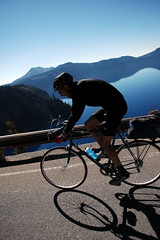
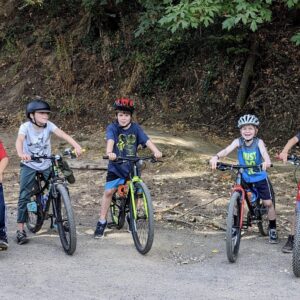
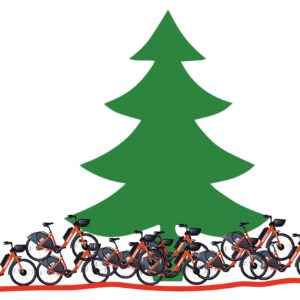
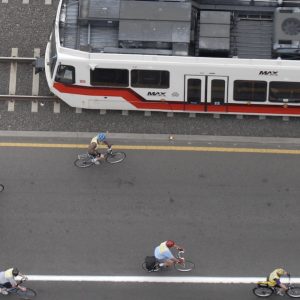
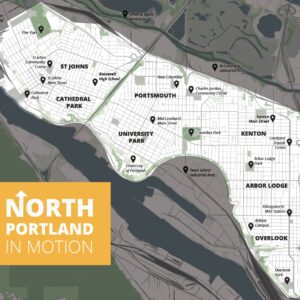
Thanks for reading.
BikePortland has served this community with independent community journalism since 2005. We rely on subscriptions from readers like you to survive. Your financial support is vital in keeping this valuable resource alive and well.
Please subscribe today to strengthen and expand our work.
1.Reduce the legal and civil rights of motor vehicle operators. “Oregon–when you get in your car, leave the Constitution outside.” In other words, have local governments really willing to coercively control the behaviors of motorists.
My idea:
Produce a map of the most scenic and interesting gravel roads to ride in Oregon.
Increase the convenience of non-motorized commuting/distance traveling. Build MUP’s paralleling all Highways and Freeways. It might not be pretty, it may be noisy, but anything to improve transportation options is a step in the right direction.
(And start with Hwy 217)
An off-highway bike route along the entire Oregon Coast.
Adding on to what’s already been said, build more rails to trails paths throughout the state. Even better, grade them so that they all run slightly downhill! 🙂
$300 tax credit for biking at least 6 months of the year.
$1,500 tax credit for property owners to fix adjacent side walk issues like large cracks, missing curb cuts etc
Create cross city roads that are only open to non-motorized traffic. Ban cars, make it a bike system right through the center of town (North-South, East-West, SE to NW etc). The money from future maintenance savings can be used to pay for initial construction costs.
Ban all large SUV’s. Implement a hefty tax for any vehicle that does meet competitive fuel mileage. Use funds to improve active transportation network.
K tesh. What is a MUP?
K tesh. What is an MUP?
Multi-User Path
MUP = Multiple Use Pathway.
Off-road MUPS connecting every town and city in the Willamette Valley within 10 miles of each other.
The town of Monmouth has one such one connecting halfway to Salem; 5+ miles of MUP parallels the highway is filled with soccer moms and joggers along a 2-line Hwy 99W. But we need more, and they need to connect to places, not end in the middle of nowhere.
Use existing annual road closures to support dedicated bike only days. Two obvious examples are Crater Lake and McKenzie Pass Highway. Each spring when the roads are plowed, have a scheduled weekend where it’s bikes only the whole way.
Create a intrastate bike highway paid by tolls and advertising, the Oregon Coast without car traffic, pedaltels(ie Motel6bike or Super8cycle a system of maintence shops Performance highway or Bike Gallerystops. Worldwide appeal cycling the Oregon Coast fine Chowder,from Astoria to wine ,gambling, and fishing in Coosbay,bicyclebeer,the corporate and private implications are limitless’ Burgerville, MCcycle
Substantial tax incentives for not owning/operating a motor vehicle. This could kick off a revolution in inner cities.
Winning idea, Colin! The state’s bean counters could easily figure out how much money non-owners save the state on road repairs, health care costs, etc. and kick that back as a tax credit.
I like Colins idea too. Instead of a tax on cars which would get allot of push back a credit for not owning a car! Not sure how that would get directly funded but I think Colin is on to something their.
Set up a bicycle registration system. Stolen bikes could easilly be identified by an engraved registration # and returned to its legal owner. It only makes sense. could you imagine what it would be like if there was no vehicle registration? The state sells off a lot of bikes that they don’t know who they belong to. I think the city might do the same on a less frequent manor. It would only cost a few dollars a year, I think it would be a worthwhile investment vs replacing your bike. I’m thinking statewide. perhaps it would catch on in other states too. oregon could be the trendsetter for this one.
Does anyone have a guess, I’m curious.
What would the “overhead” cost of a bike permit system be when you figure all of the administrative work involved?
Can the state charge “a few dollars” per bike and turn a profit?
The state is not suposed to turn a profit.
A Statewide bike monorail system! – http://www.shweeb.com/
We should dedicate more funds to improving what we have, i.e. a dedicated sweeper to clear bike lanes of major debris. Drivers think potholes in the city are bad- they should ride the bike lanes and see what cyclists contend with is not just a nuisance, it’s dangerous.
Also think we could focus efforts (echoing others here) on making connections between major areas. There are way too many places that ‘you can’t get to from here’. If we identify where we need to improve the places that link up ‘here’ to ‘there’ we could create ‘safety corridors’ like we currently use on dangerous roadways (for cars of course). Dangerous roads and marginal intersections could be targeted for sharrow markers, lowered speeds, signs to remind drivers of cyclists etc. Not sexy but safety and basic usability is the number one concern for most cyclists and future cyclists.
Editing post 18,
I should have written, “pay for itself”.
Pave path south of Sellwood Bridge and continue path south through mansions, so there is a relatively flat path from West Linn through downtown without going through cemetery. From Lake O, it would go as follows: Gorge Rodgers park Plus 100 foot jump to bike path going to Foothills City Park plus 300 foot jump to Stamphor Road and across fielding Road plus 300 foot jump into Peter Kern Park plus small jump to SW Riverwood Road plus jump to Powers Marine Park trial.
– The “Plus Jumps” are areas that would require new rights of way across private property (very expensive property I might add). New paths of less than two miles could loop and link the entire city portion of Willamette.
– With this improvement, there would be a safe circle of bike paths or good bike lanes starting from the Steel Bridge around the Oregon City Bridge and back to the steel bridge.
Hey, Jonathan, Tuesday has come and gone! When are you going to let everyone know that I won?
🙂
thanks everyone for your ideas… we’ve gone through the list and we’ll be notifying winners shortly! stay tuned.